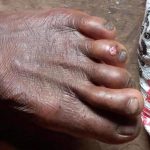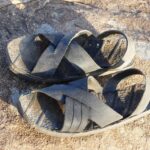A Baobab tree (Adansonia digitata) is characteristic of African Savannah biomes. In Tanzania, the Hadza people in the mountainous southern area of Lake Eyasi taught us to climb these trees. Although it is not difficult, knowing the techniques for a safe climb is important.
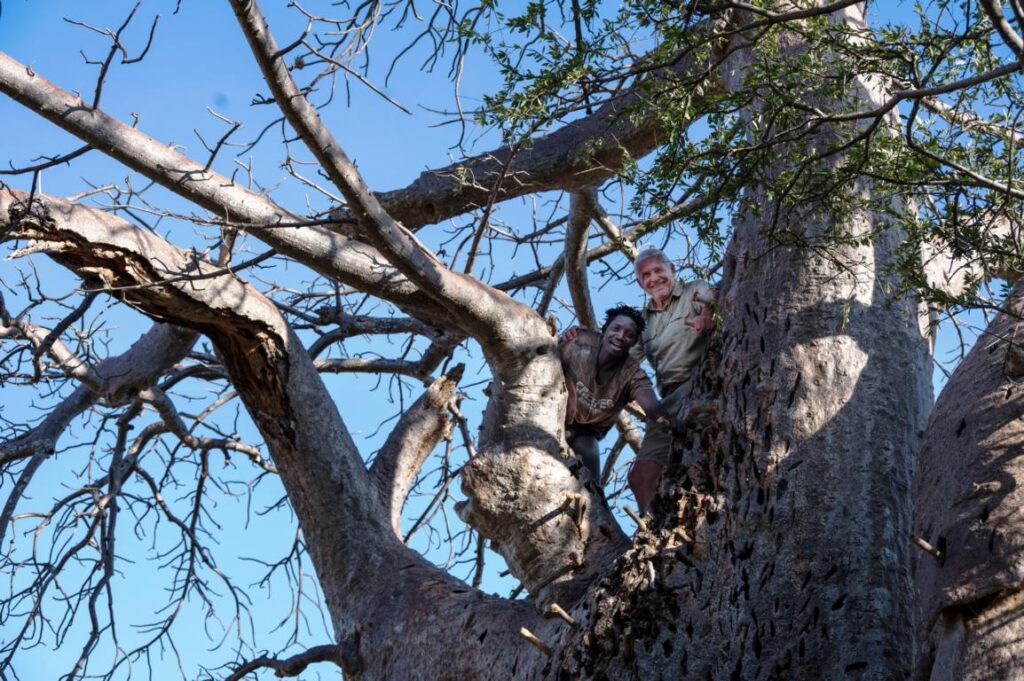
Distribution and tree characteristics

Concentrations of these trees occur in Western Africa below the Sahel zone, Eastern Africa, and a belt from Southern Angola via the Caprivi strip and Zimbabwe down to the Limpopo River. Baobab trees are large, round, canopied trees with a swollen trunk, about 10-25 m in height.
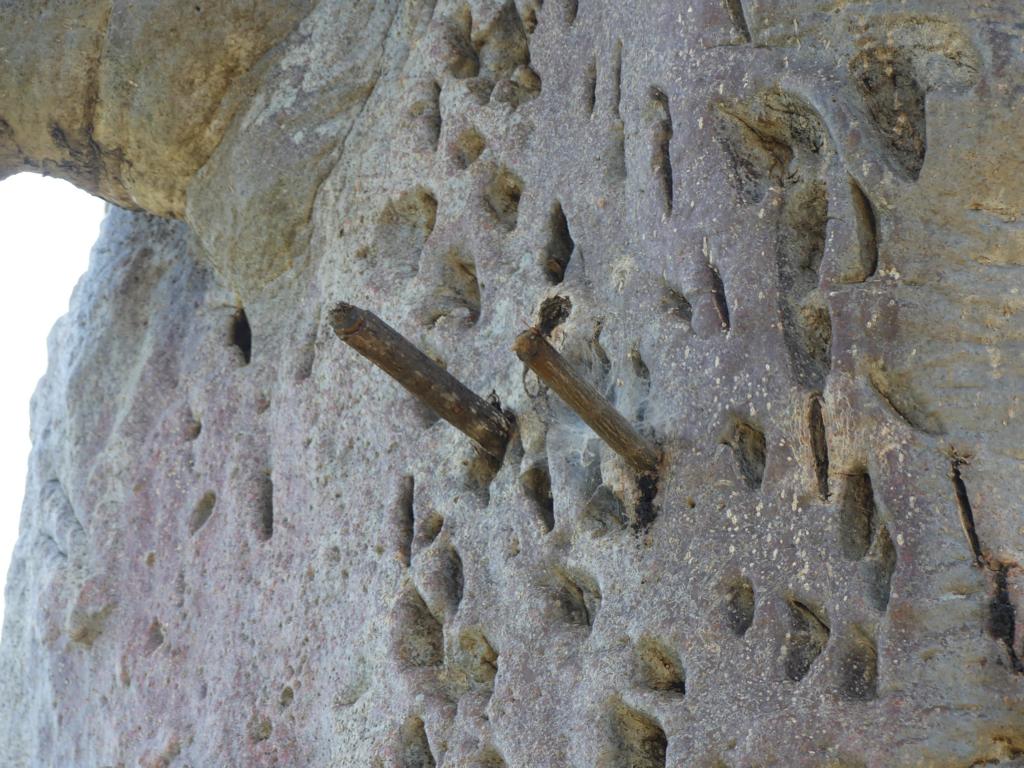
Their bark is thick, smooth, and waxy in shades of greyish colors. When damaged, the bark will overgrow these damages fast.
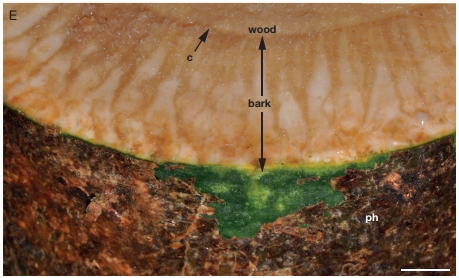
Cross section through a mature branch of Adansonia digitata. Wood, bark, and cambium (c) are visible. Green layers under phellem (ph) for additional photosynthesis. Scale bar: 10 mm.
The thickness of the outer part of the bark is about 4cm / 1 ½’’. Below this outer bark and cork cambium, the phloem area begins. Phloem and xylem are very soft and contain a high percentage of water. When pressing this wood between two fingers, water is easily squeezed out.
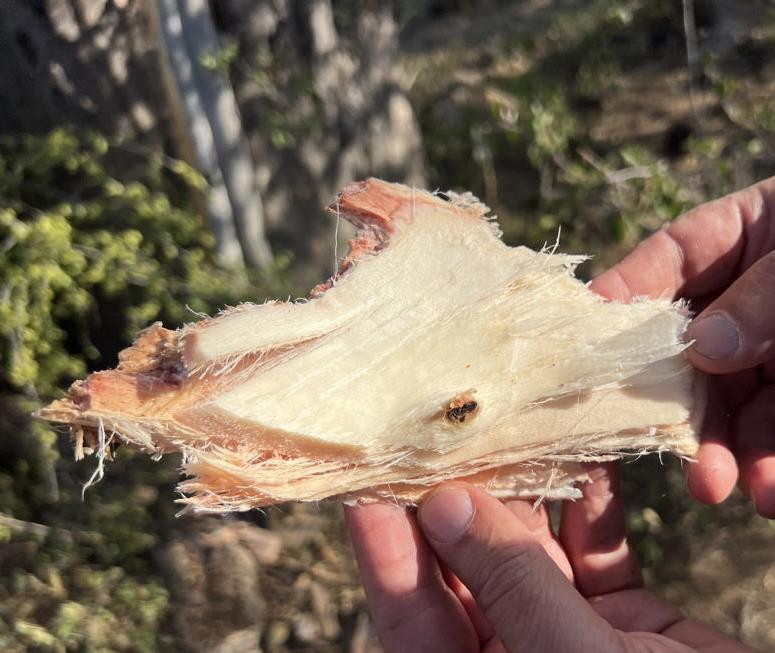
Therefore, the tree’s whole structural integrity depends on the strength of the outer bark. All wooden matter inside the trunk, the branches, and the roots are spongy and full of water (water constitutes 76% of roots, stems, and branches). Interestingly, no comprehensive scientific explanation exists today (July 2024) for how this bark and the watery wooden sponge can mechanically support the whole tree structure.
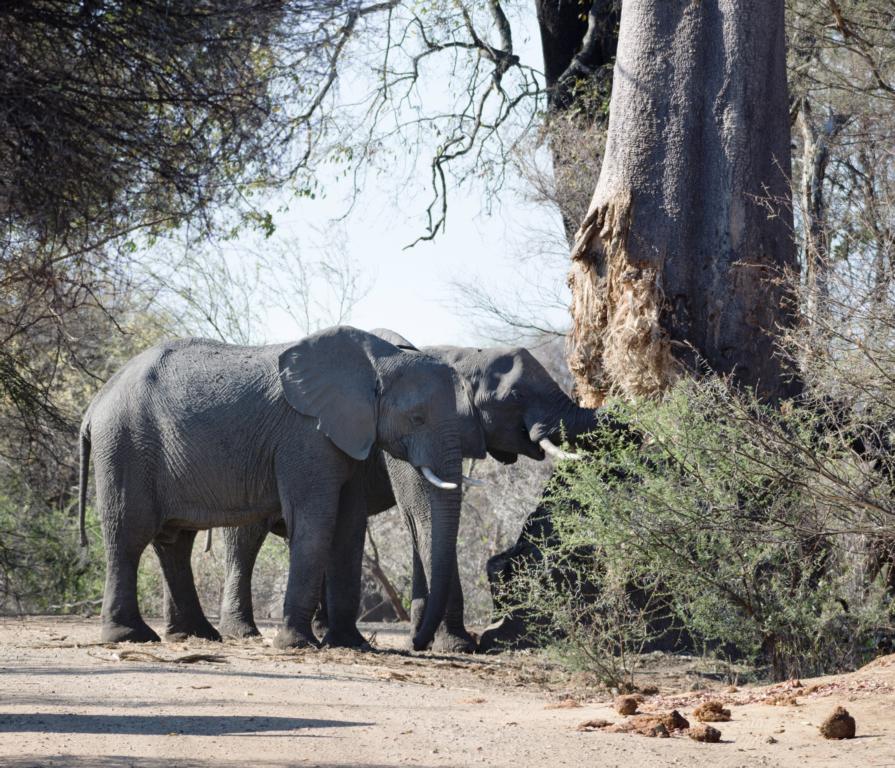
Delving into this matter with the bark is necessary because wooden pegs must be driven into the bark to climb the Baobab tree, which has to hold a person’s weight.
Why climb a Baobab tree?
There are two main reasons why someone wants to climb a Baobab tree.
1 – Surface water is held in holes in or above the main trunk, which can be helpful in water scarcity. Baobabs also store water in natural hollows between branches.
2 – Hollows in the trunk and branches and between branches attract stingless- and stinging bees for nesting. Hadza men and boys will collect the honey in these beehives.
However, it must be mentioned that falling from Baobab trees is the most common accident experienced by Hadza men during their lifetime. The Hadza village chief, Mahiya, was about 50 years old and fell twice from a Baobab tree.
Preparations for climbing
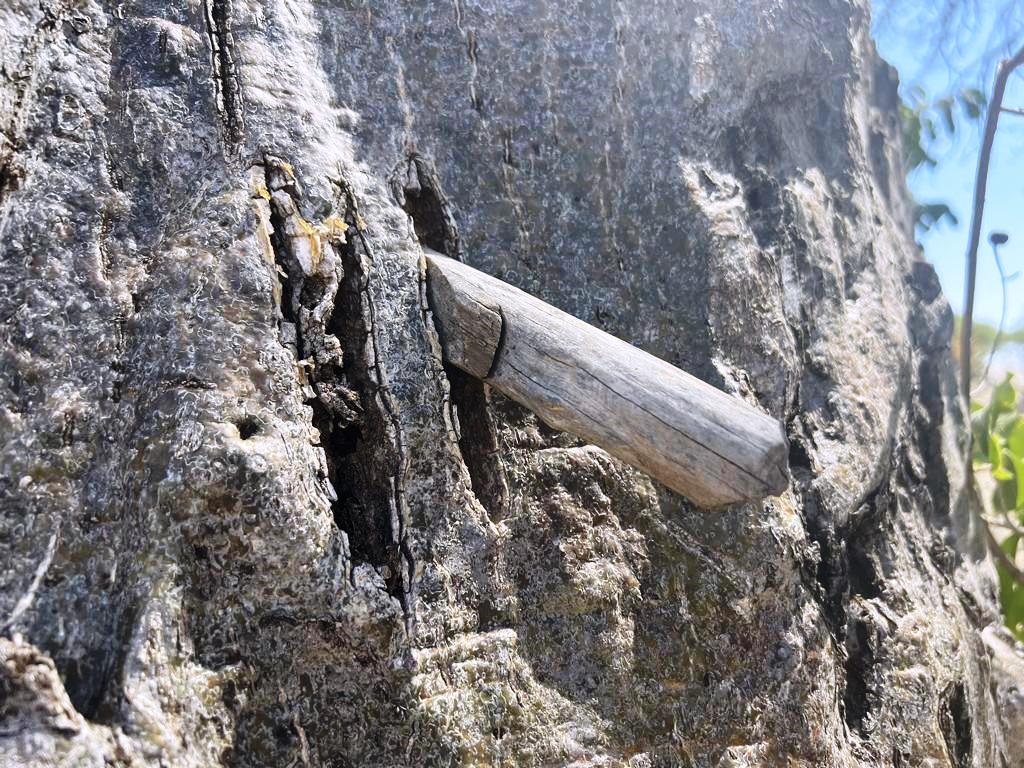
The most important rule for climbing a Baobab tree is NEVER STEP ON OLD PEGS sticking in the bark. The pegs are only held by the squeezing forces of the slit bark and not by the wood behind the bark. The wood itself is spongy and watery and will not exert any force. The bark will quickly adapt its cells to the pressure and reduce their size. This means the pegs are not getting squeezed in anymore – but are getting loose. Hadza people do not even use pegs that were set a day ago.
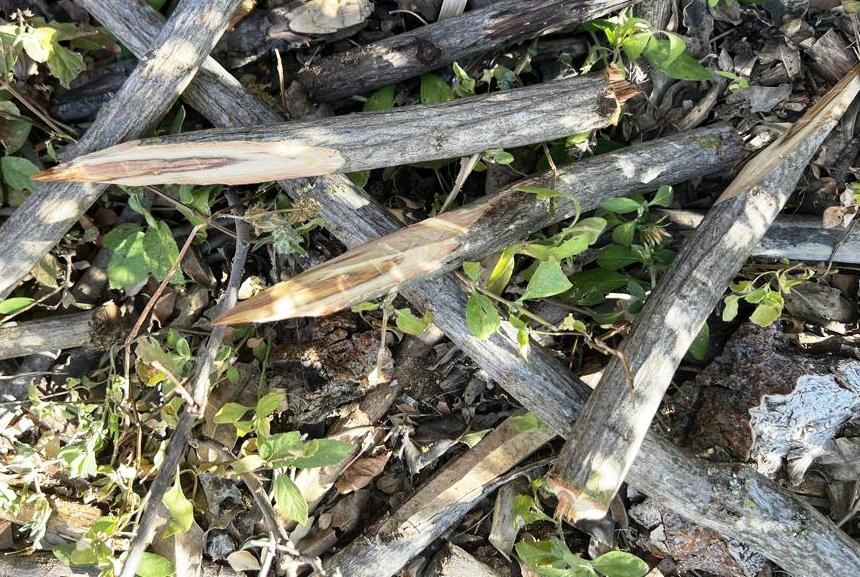
Straight Grewia stalks are freshly cut for pegs. The diameter of these pegs is about 3cm / 1 ¼’’ at a length of about 35cm / 13 ½’’.
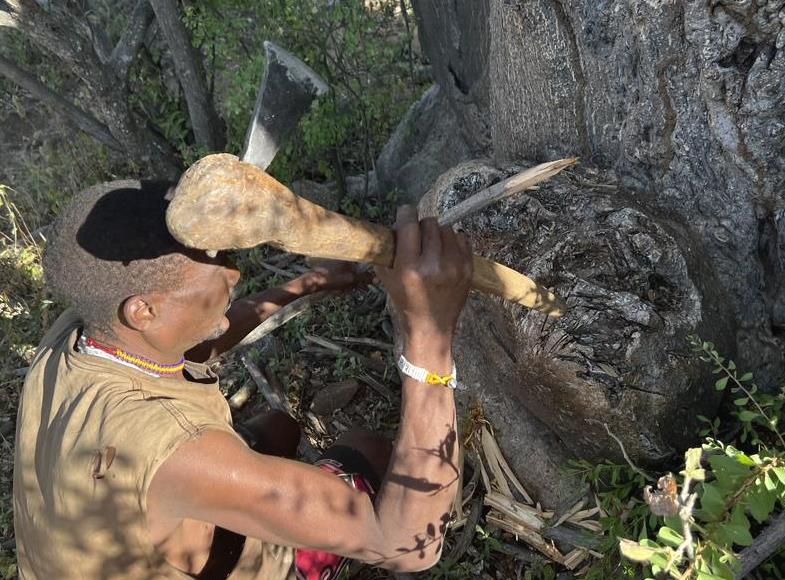
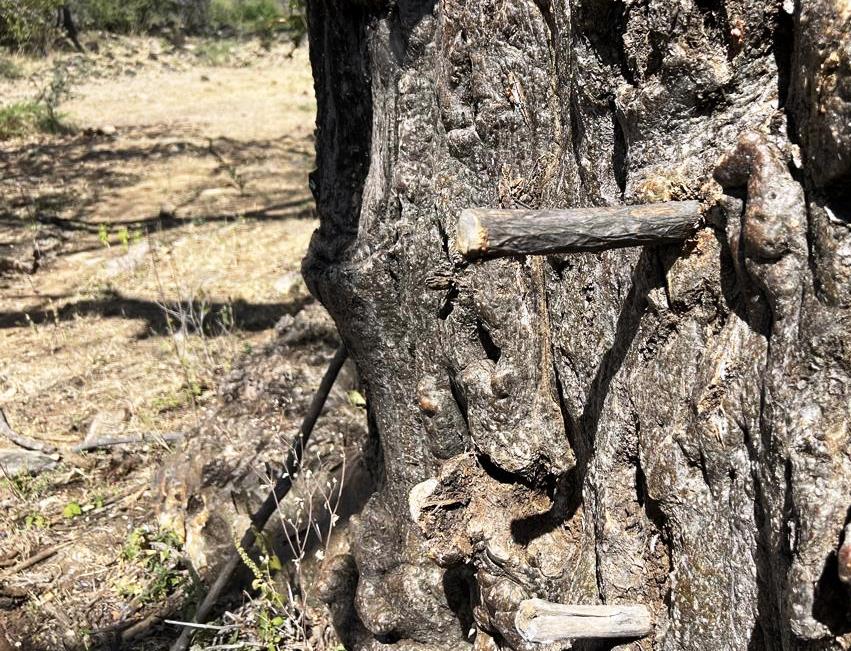
One end will be pointed wedge-shaped.
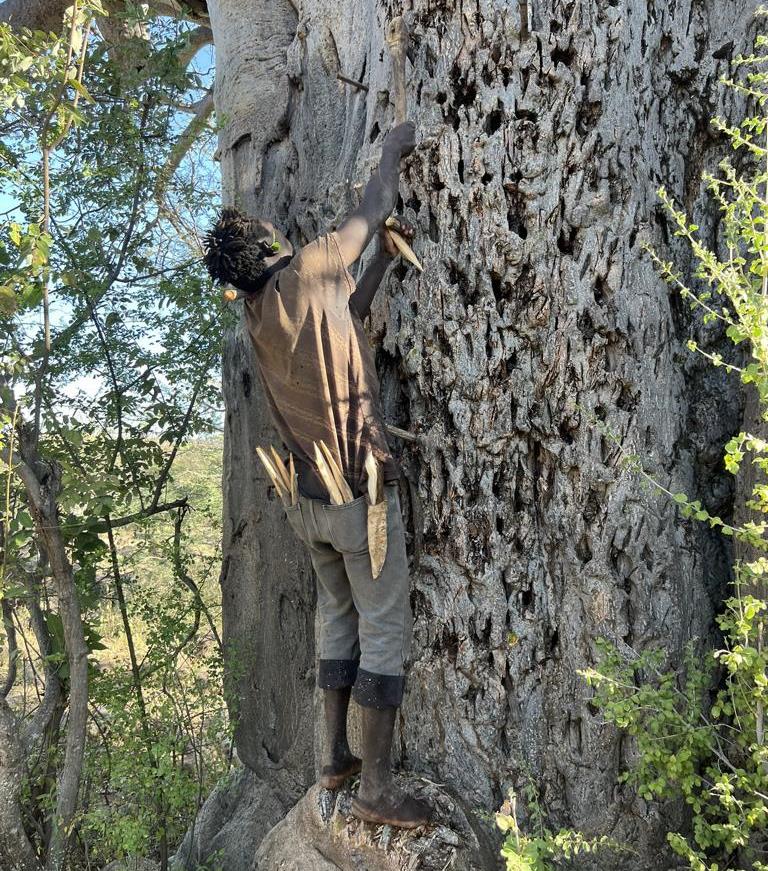

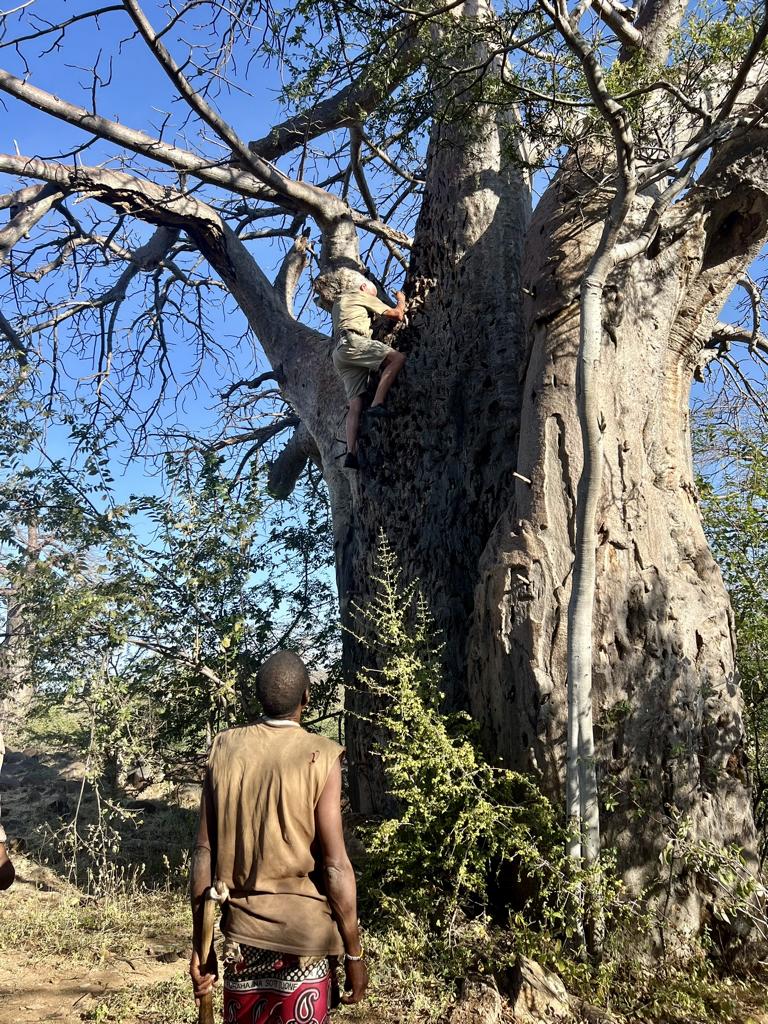
Before setting a peg, with a forceful strike with the axe, a slit will be cut into the Baobab tree bark. Into this slit, the peg then will be driven. This way, the pegs will be installed one after another, and the climber will work his way up stepwise.
Lessons learned from climbing a Baobab tree
- First and foremost is to NEVER STEP ON OLD PEGS, even if they are only one day old.
- Pegs have to be cut from straight-grown hardwood, like Grewia sp.
- An axe is needed to cut an opening slit into the Baobab bark and hammer the pegs down this slit.
- Always step on a newly installed peg next to the bark and not on the outside end.
Additional information
My book ‘Hadzabe Survival Skills‘ offers more skills, knowledge, tools, and techniques for the Hadzabe people’s life in their natural environment. It is available on Amazon.com and Amazon’s regional websites.
.



